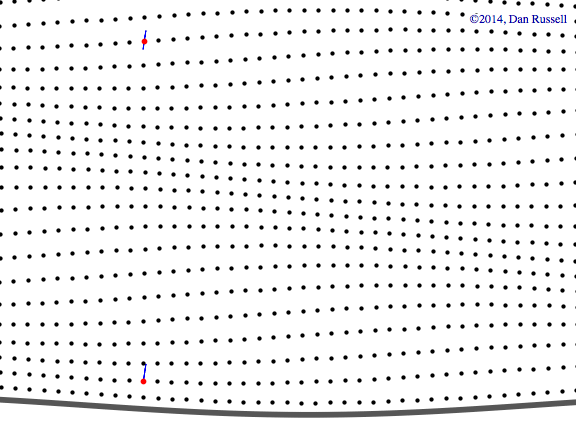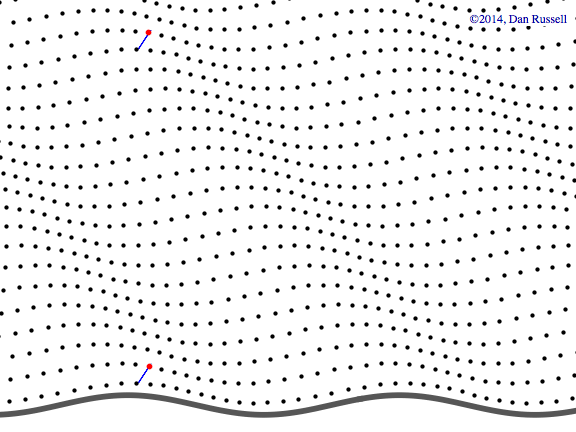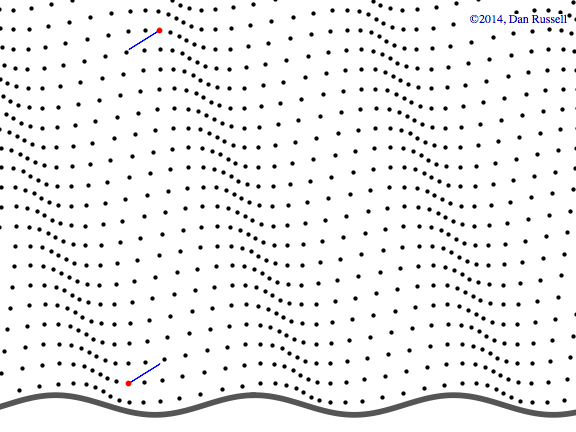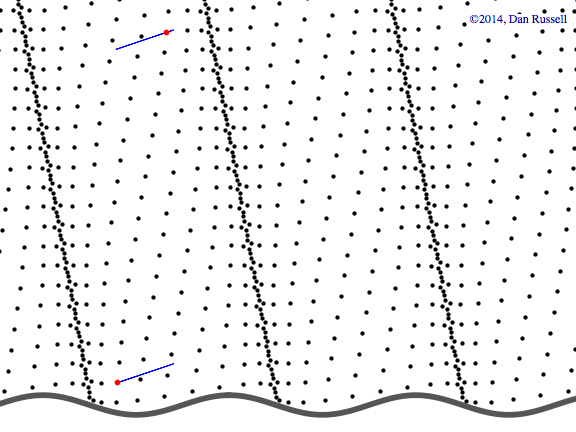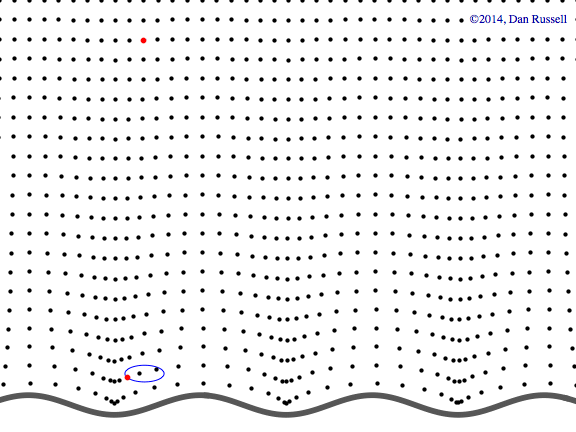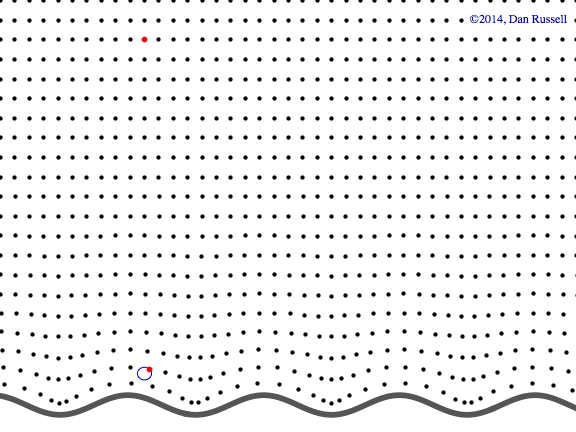Plane Waves and Evanescent Waves
(Sound Radiation from a Plate)
A plane wave is a wave that propagates in only one direction, with wavefronts that are planes perpendicular to the direction in which the wave is traveling. Along those planar wavefronts, the pressure (or displacement from equilibrium) has the same value. An evanescent wave doesn't propagate but instead decays exponentially with distance.
Plane wave in \(+x\) direction
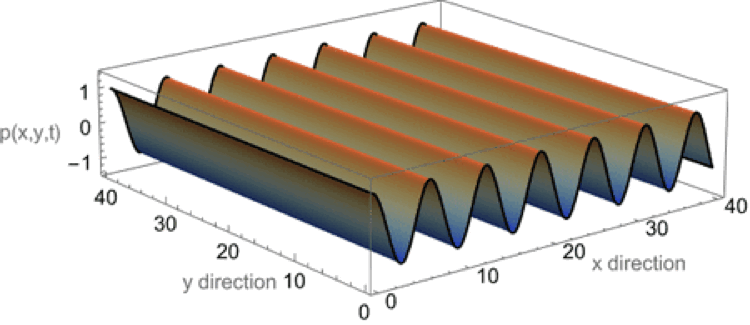
This first animation shows a plane wave propagating in the +x direction. The equation describing the plane wave is \( p(x,y,t)=A^{-i(\omega t - k_x x)} \) with the real part carrying the physical meaning. There is no variation in the amplitude along the y-axis as the wave travels parallel to the x-axis.
Plane wave in both x-y plane
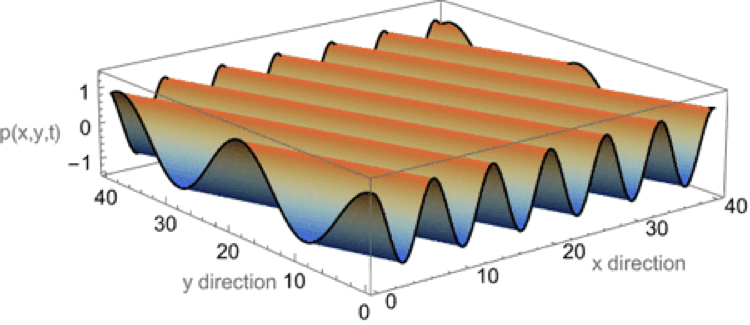
This animation shows a plane wave propagating in the x-y plane with components in both the x and y directions. The wave function is \( p(x,y,t)=A^{-i(\omega t - k_x x - k_y y)} \) and the animations shows traces of the wave along the x and y axes. In this example, the plane wave is propagating at an angle of 19o from the x-axis, and the trace velocity of the wave along the y-axis is noticeably faster than the trace velocity of the wave along the x-axis. The trace wavelength in the y-direction is longer than the trace wavelength along the x-direction.
Evanescent wave in the x-y plane
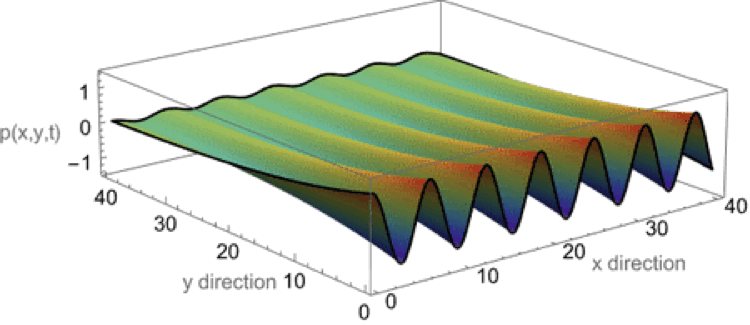
This animation shows a evanescent wave with a trace velocity along the x-axis, but which decays exponentially in the y-direction. The wavenumber ky in the y-direction is imaginary, resulting in disturbance of the form \( p(x,y,t)=Ae^{-k_y y}e^{-i(\omega t - k_x x)} \) that exponentially decays in the y-direction, while traveling in the x-direction.
